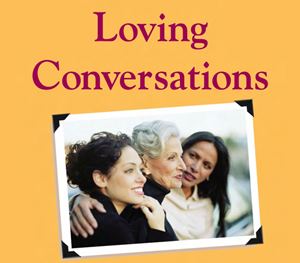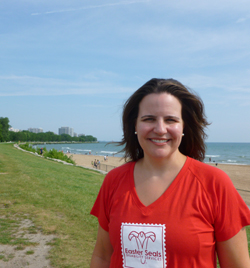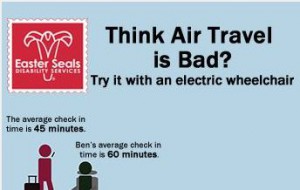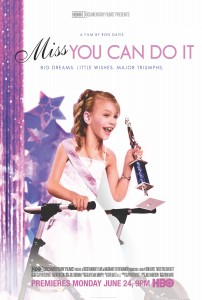by Beth Finke
 My mother, Flo, is 97 years old and, believe it or not, she still lives on her own. One of my sisters lives nearby and checks on her often, and the rest of us come when we can, especially at Christmas.
My mother, Flo, is 97 years old and, believe it or not, she still lives on her own. One of my sisters lives nearby and checks on her often, and the rest of us come when we can, especially at Christmas.
Going home for the holidays to spend time with family can be the best part of the holiday season. HomeFinder.com is supporting Easter Seals this holiday season to help raise awareness and support the education of caring for aging family members. Through December 28, HomeFinder.com will donate $1 to Easter Seals for every new “Like” on their HomeFinder.com consumer Facebook page, And, this week they are raising the donation to $5 per like! “Like” HomeFinder.com on Facebook here.
 Holiday visits with aging parents or grandparents may offer the first opportunity in several months to evaluate changes in older family members’ lives; signs that could indicate a need for increased support. When home for the holidays, it is important to assess the needs of your aging loved ones, so you can ensure their safety and security at home.
Holiday visits with aging parents or grandparents may offer the first opportunity in several months to evaluate changes in older family members’ lives; signs that could indicate a need for increased support. When home for the holidays, it is important to assess the needs of your aging loved ones, so you can ensure their safety and security at home.
1. Make sure your loved one is eating regularly and maintaining a clean household. Ensure all food is fresh and edible and that the pantry is fully stocked. Also, check that the house is tidy, in good shape and not a safety hazard to your relative.
2. Be aware of any changes in your loved one’s personal hygiene and medication schedule. Watch for changes in personal habits such as infrequent bathing, not shaving or dressing inappropriately for the weather. Also, familiarize yourself with any medications your loved one might be taking on a regular basis and make sure they’re taking them on schedule.
3. Check to see that your loved one is maintaining their typical routines and activities with ease. Does your loved one still attend their weekly bingo game, visit with friends and run necessary errands? Check with neighbors and friends to see if they’ve noticed any differences in behavior. Also, if your loved one still drives, take a drive with them and make sure they are able to drive safely and comfortably in the local area.
If you can’t make it home this holiday season, here are a few ways to care for your aging loved ones while far away:
1. Create a support network within the community to help you care for your loved one. Work with neighbors, friends and medical providers to set up a schedule where someone can check on your loved one consistently and provide them with anything they might need and are unable to get themselves.
2. Consider working with a geriatric care manager. Many long-distance caregivers find it helpful to work with geriatric care managers to arrange caregiving services. These eldercare professionals can help assess needs and coordinate services in your loved one’s area, whether it be arranging a one-time move or a long-term care relationship.
3. Create a caregiving plan and involve your loved one as much as possible. Include other family members, friends and care managers while creating a plan for your loved one. Establishing a firm schedule will help your loved one adjust and will spread responsibility between all parties involved.
Learn more about caring for your aging relatives by downloading Easter Seals’ Loving Conversations, an online guide full of resources for adult day services and solutions for common transportation challenges.







 I am so pleased to have Amy Richmond back as a guest blogger today. Amy is a member of the Easter Seals
I am so pleased to have Amy Richmond back as a guest blogger today. Amy is a member of the Easter Seals  In addition to my job moderating this blog for Easter Seals Headquarters, I also lead three different memoir-writing classes every week for senior citizens here in Chicago.
In addition to my job moderating this blog for Easter Seals Headquarters, I also lead three different memoir-writing classes every week for senior citizens here in Chicago. 




